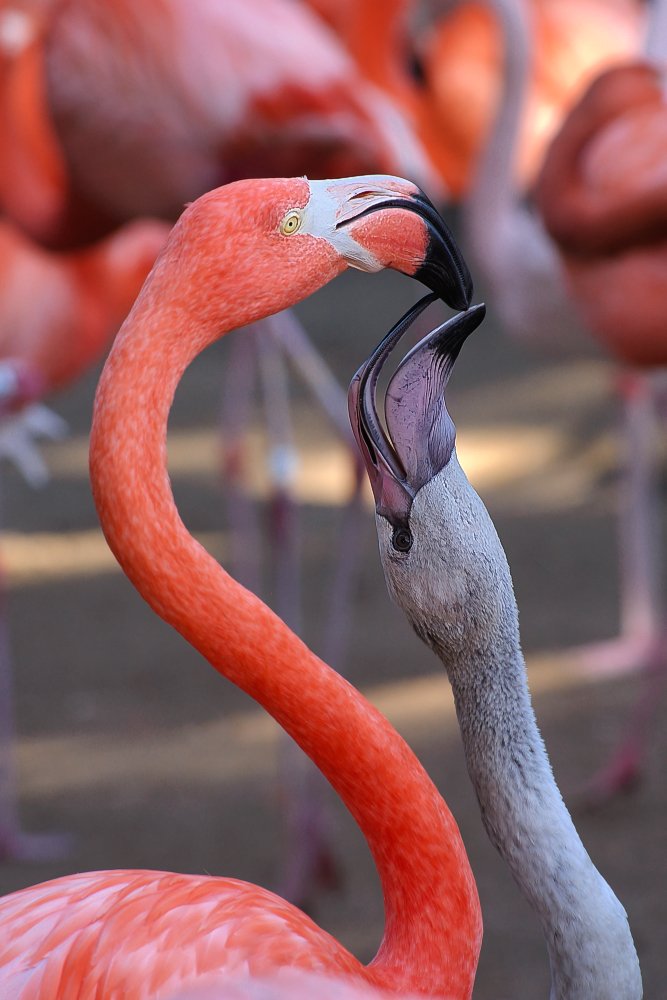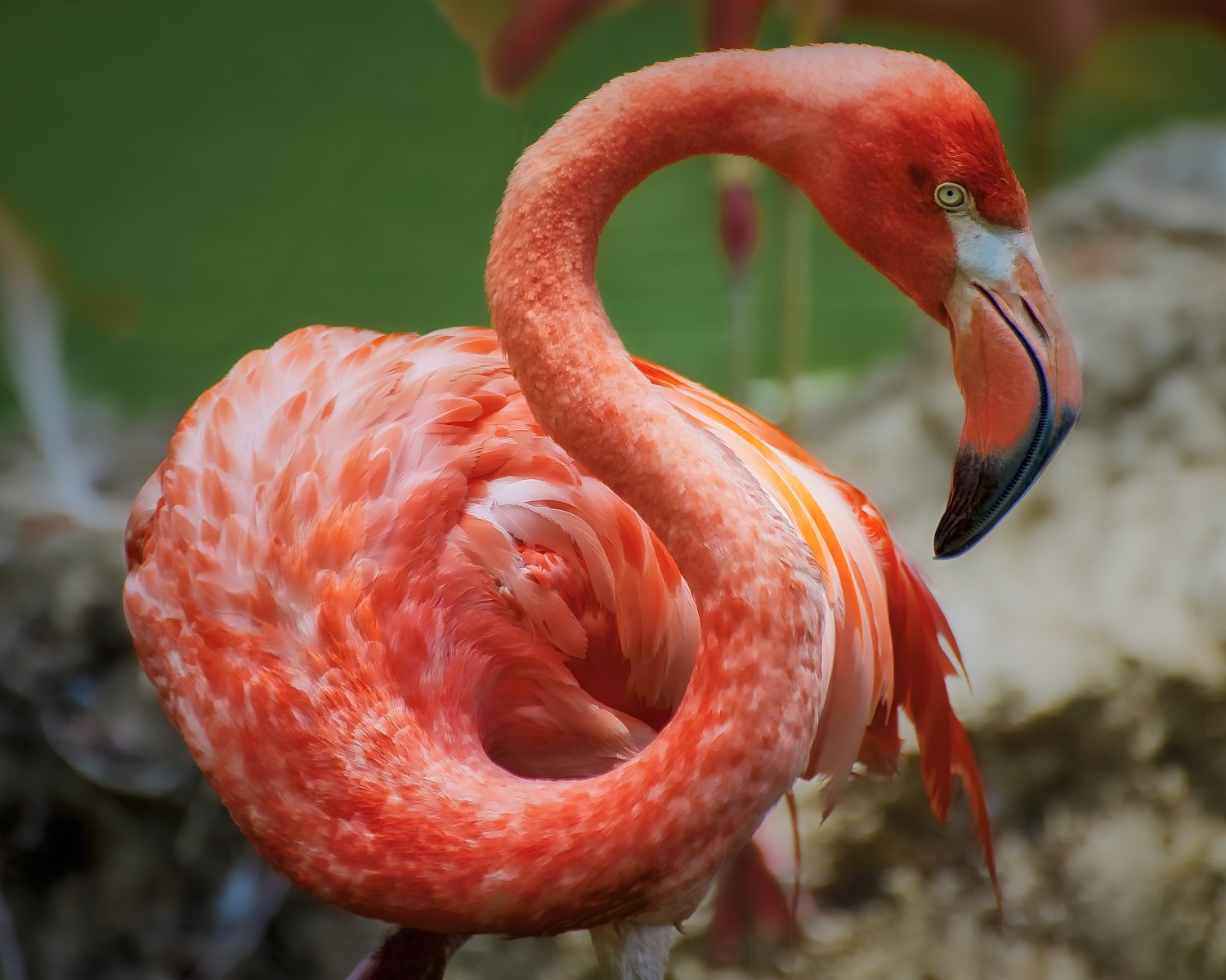Why is that flamingo Grey?
Flamingos are one of the most unique of all bird species. Their large hooked bills, long necks, stilt-like legs, webbed feet, and pink to reddish coloration give flamingos a cartoonish appearance. There are six species of flamingos, two of which occur in Africa, Asia, and Europe, and four in North and South America and the Caribbean. While there are size and color variations among them, the American flamingo (Phoenicopterus ruber) is the second largest and brightest colored. Currently, there are no naturally occurring breeding populations in the U.S, but breeding populations in zoos are common as well as a small captive population at Hialeah Park, Florida. Over the last 10 years, an increasing number of wild flamingos have been seen in Florida and the Gulf Coast, raising hopes that breeding populations may re-establish in the U.S.
American flamingo, Denver Zoo, Colorado.
But why are some flamingos grey or white? Are they albinos? Chances are no. Although such mutations do occur in nature they are rare. So if they are not albinos, then why are some flamingos not brightly colored pink or red? There are three reasons for this. First flamingos are born with white down feathers, which turn grey when they leave the nest in 1-2 weeks. They’re also born with bright red, straight bills, and bright red legs. It takes flamingo chicks about 11 weeks for their bills to begin obtaining the characteristic hook shape and they gradually obtain their pink feathers over their first 2-3 years of life.
American flamingo adult and juvenile (grey), San Diego Zoo, California.
The second reason flamingos may not be brightly colored is because of their diet. Flamingos are filter feeders, preferring brackish and salt water habitats. When eating, they place the top of their head in the water with their bill pointing back to their feet. Then they move their head side-to-side along the bottom of shallow waters, using their tongues to draw water containing phytoplankton, invertebrate animals (such as brine shrimp and zooplankton), and algae into their mouths. As their tongues push the water out through laminar (comb-like) plates on the edges of their bills, the food particles get trapped in their mouths. These food items are high in carotenoid compounds. Carotenoids are responsible for giving plants, algae, and some animals their red, orange or yellow colors. In flamingos, their pink color is a result of metabolizing the carotenoids from the their food when molting in new feathers. If a flamingo’s diet does not consist of enough items with carotenoids during molt the feathers will not have enough carotinoid compounds to produce their characteristic bright color.
American flamingo, San Diego Zoo, California. Note the laminar plates between the upper and lower bill.
But even if flamingos get enough carotenoids when their feathers are growing to turn them pink to red, these pigments fade over time with exposure to sunlight. Yet, many flamingos are able to delay such fading by applying their own make-up! This cosmetic coloration occurs when adults use their bills to take secretions high in carotenoid compounds from the preen (uropygial) gland at the base of the tail, and spread it on their feathers. It’s believed that flamingos apply cosmetic coloration as part of their mating and nesting rituals. Both females and males engage in cosmetic coloration. Once chicks leave the nest in spring and early summer, adults reduce their application of make-up and the feathers fade until the next molt.
American flamingo, Aruba. Note the post-nesting season faded coloration.
So next time you see a grey or white flamingo, you may be seeing a chick or a juvenile that has not yet obtained its pink feathers, an adult that is eating a diet low in carotenoids, or one just after breeding season when its has ceased applying its make-up.



